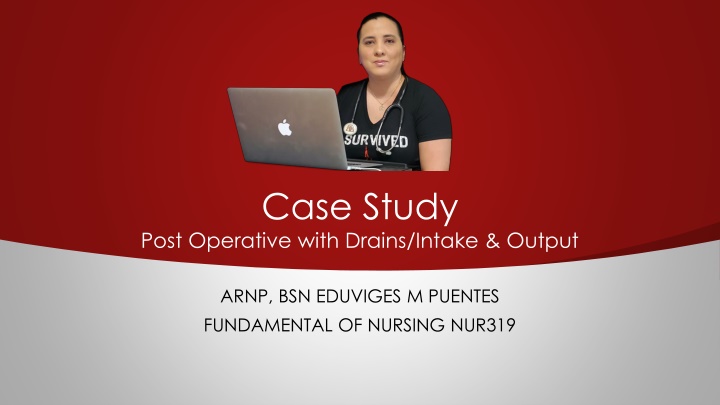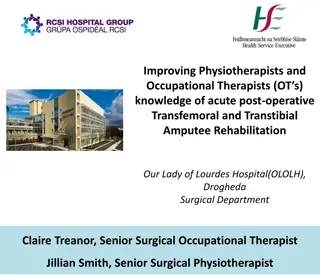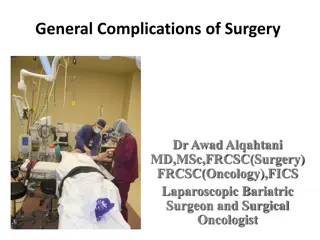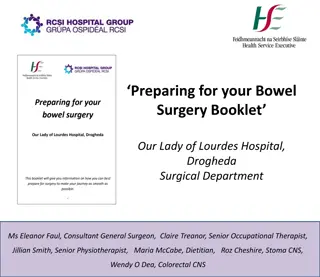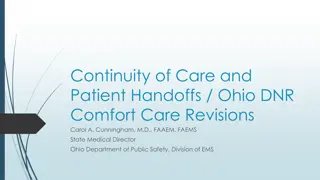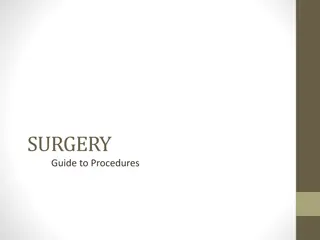Post-Operative Care for a Patient with Drains: Case Study
A 62-year-old man, Mr. Owens, underwent surgery for neck cancer. As the nurse assigned to his care, you assess his condition, manage drainage tubes and IV lines, monitor fluid output, address nutritional needs post-surgery, and review his health history for factors associated with oral cancer development. Essential nursing considerations post neck surgery are highlighted in this case study.
Download Presentation

Please find below an Image/Link to download the presentation.
The content on the website is provided AS IS for your information and personal use only. It may not be sold, licensed, or shared on other websites without obtaining consent from the author.If you encounter any issues during the download, it is possible that the publisher has removed the file from their server.
You are allowed to download the files provided on this website for personal or commercial use, subject to the condition that they are used lawfully. All files are the property of their respective owners.
The content on the website is provided AS IS for your information and personal use only. It may not be sold, licensed, or shared on other websites without obtaining consent from the author.
E N D
Presentation Transcript
Case Study Post Operative with Drains/Intake & Output ARNP, BSN EDUVIGES M PUENTES FUNDAMENTAL OF NURSING NUR319
Scenario Mr. Owens is a 62-year-old man who underwent surgery of the neck yesterday due to cancer of the mouth. You are the nurse assigned to care for Mr. Owens during his first postoperative day. The initial assessment finds Mr. Owens sitting up in bed; he is drowsy but oriented 3 when aroused. He has significant edema in his neck and mouth area but does not appear to be in respiratory distress. His respiratory rate is 16 to 18, and his oxygen saturation is 96% on 40% oxygen via face tent. He has two peripheral IV lines both infusing Lactated Ringer solution at 75 mL/hr. Two Jackson--Pratt drainage tubes are partially filled with serosanguinous drainage. When emptied drain #1 had 50cc and drain #2 had 70cc. Mr. Owens has a Foley catheter in place draining clear yellow urine. When the foley collection bag was emptied at 0800 there was 250cc.
1. What is the rational for the patient being placed in Fowler's position after surgery? Answer Breathing purposes- placing the patient at Fowler s position will ease breathing for the patient(Stoppler & Davis, 2018) Aspiration prevention- if the patient is left in a flat position after the surgery there is a high possibility for him to aspirate. Therefore, the Fowler's position will prevent Mr. Owen from aspirating (Stoppler & Davis, 2018).
2. The nurse notes that there has been 240 ml output in the drainage tubes during the first 24 hours after the surgical procedure. What should the nurse do? Answer The nurse notes that in the first 24 hours in the drainage tube was 240 ml. Then he must follow the following procedure to perform a surgical process; the nurse should first empty the drainage tube after recording the input and the output. The nurse should then inform the doctor about Mr. Owens record on the large volume output of the fluid. The information give to the doctor will help him or her to check the rule if Mr. Owen is bleeding(Stoppler & Davis, 2018).
3. Postoperative, the nurse identifies that the patient is at risk for imbalanced nutrition, less than body requirements to anorexia and dysphagia. The nurse instructs Mr. Owens to eat soft foods and suggests that he tilt his head to the unaffected side to facilitate swallowing. What is the rationale for these instructions? Answer To reduce the resistance against the area operated, and the pressure form the mattress.
4. In reviewing Mr. Owens medical record, what findings in his health history are associated with development of oral cancer? Answer Smoking Excessive alcohol intake.
